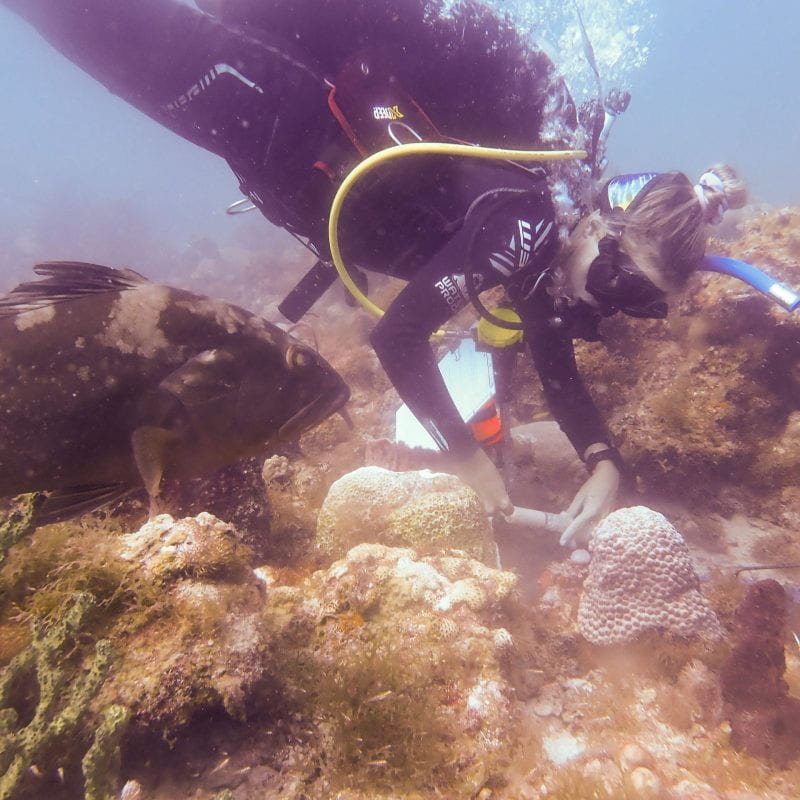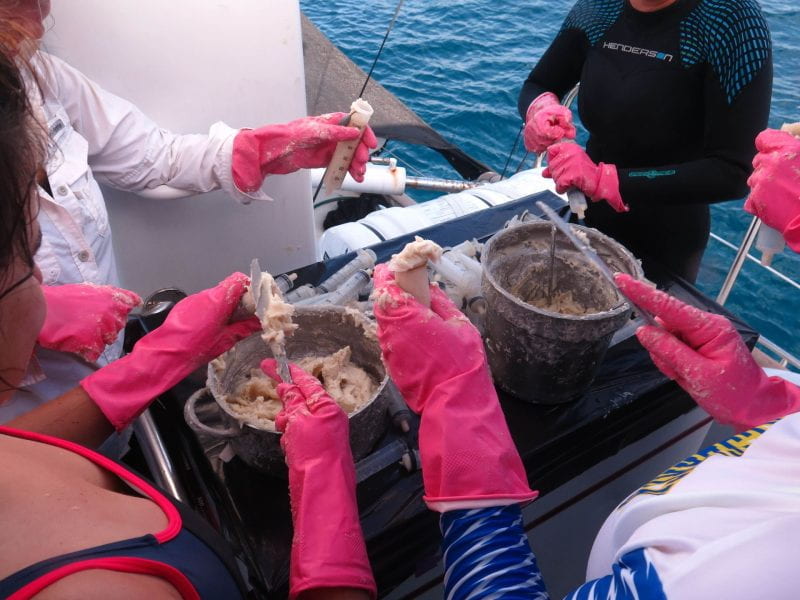NSU Researchers Helping Save Coral Reefs


Amanda Zummo (NSU graduate research assistant) treats diseased corals in the Dry Tortugas as a grouper looks on. Photo: Karen Neely
Corals in Florida have been heavily impacted by a disease that has moved through the reef tract since originating near Miami in 2014. The disease, termed Stony Coral Tissue Loss Disease (SCTLD) causes lesions that move quickly across affected coral colonies, often killing them within weeks. The disease reached Dry Tortugas National Park in summer of 2021, and response teams at the Park continue efforts to mitigate the impacts. They got assistance this fall from two research cruises focused specifically on helping diseased corals.

Scientific divers mix a medicinal paste used to treat diseased corals. Photo: Karen Neely
Led by Keys-based scientists with Nova Southeastern University (NSU), the missions included 17 scientific divers from NSU, Florida Atlantic University’s Harbor Branch Oceanographic Institute, and the University of the Virgin Islands. Much of the funding was provided by a Coral Emergency Response Fund established by NOAA and the National Fish and Wildlife Federation; additional funds came from the National Park Service and donated staff time by the collaborating institutions.
Divers spent nearly 250 hours underwater carefully surveying an area larger than 20 football fields. Corals with SCTLD lesions were treated with a medical paste that is applied by hand onto the diseased tissue. The paste has been used on nearly 20,000 diseased corals in Florida and is also used on corals elsewhere in the Caribbean. Treated corals monitored for over three years in Florida show high survivorship after treatments.
The divers on the Dry Tortugas missions treated more than 6,000 corals. Most were located at a high-priority reef near Loggerhead Key, known for its high coral cover and diversity. But divers also focused efforts on areas around Fort Jefferson, which are popular with snorkelers and those walking the moat wall within the National Park. All of these efforts are expected to help preserve these corals, along with the fisheries habitat, aesthetic value, and reproductive capacity they provide for the future of Florida’s reefs.
Posted 10/23/22